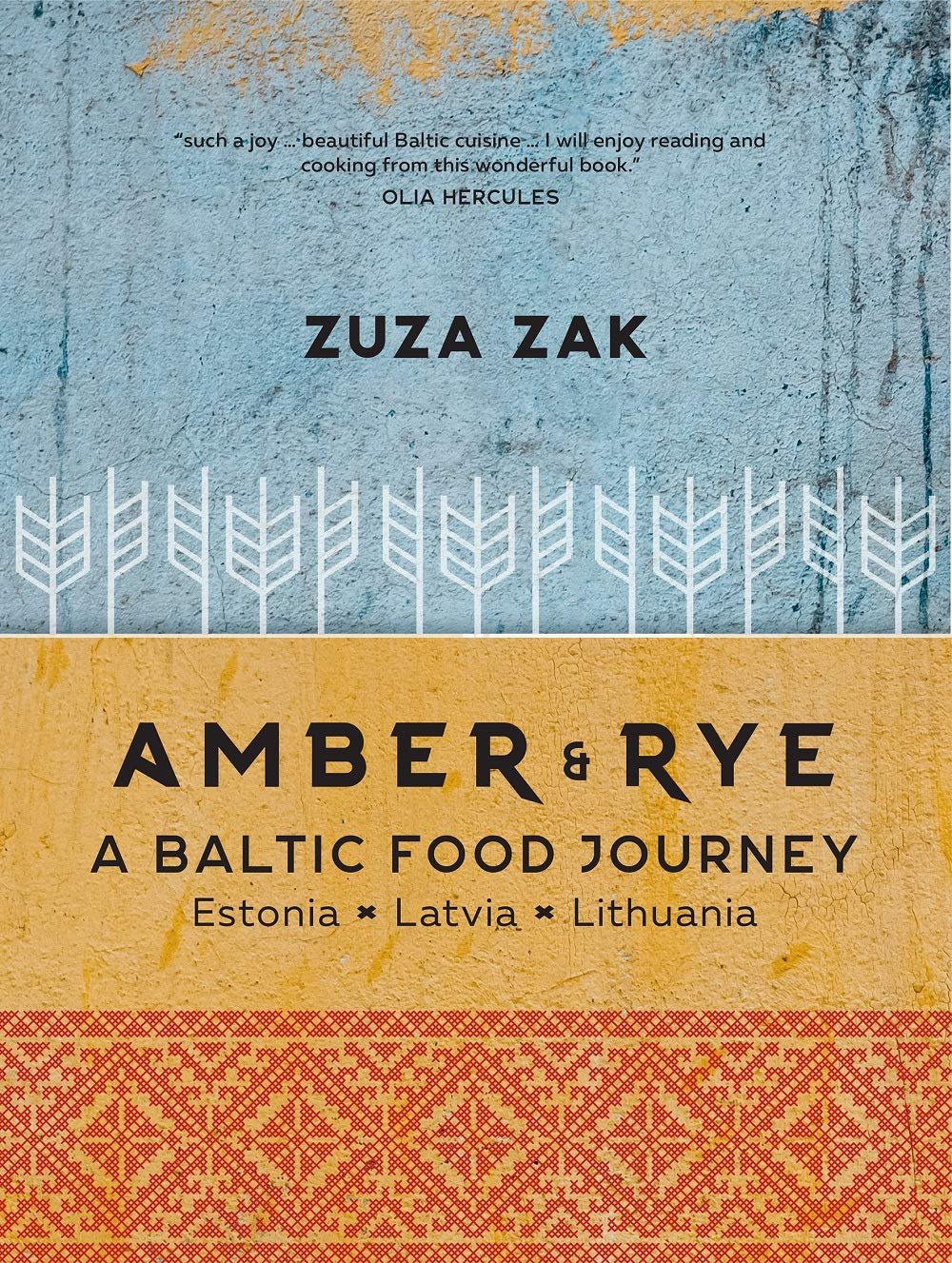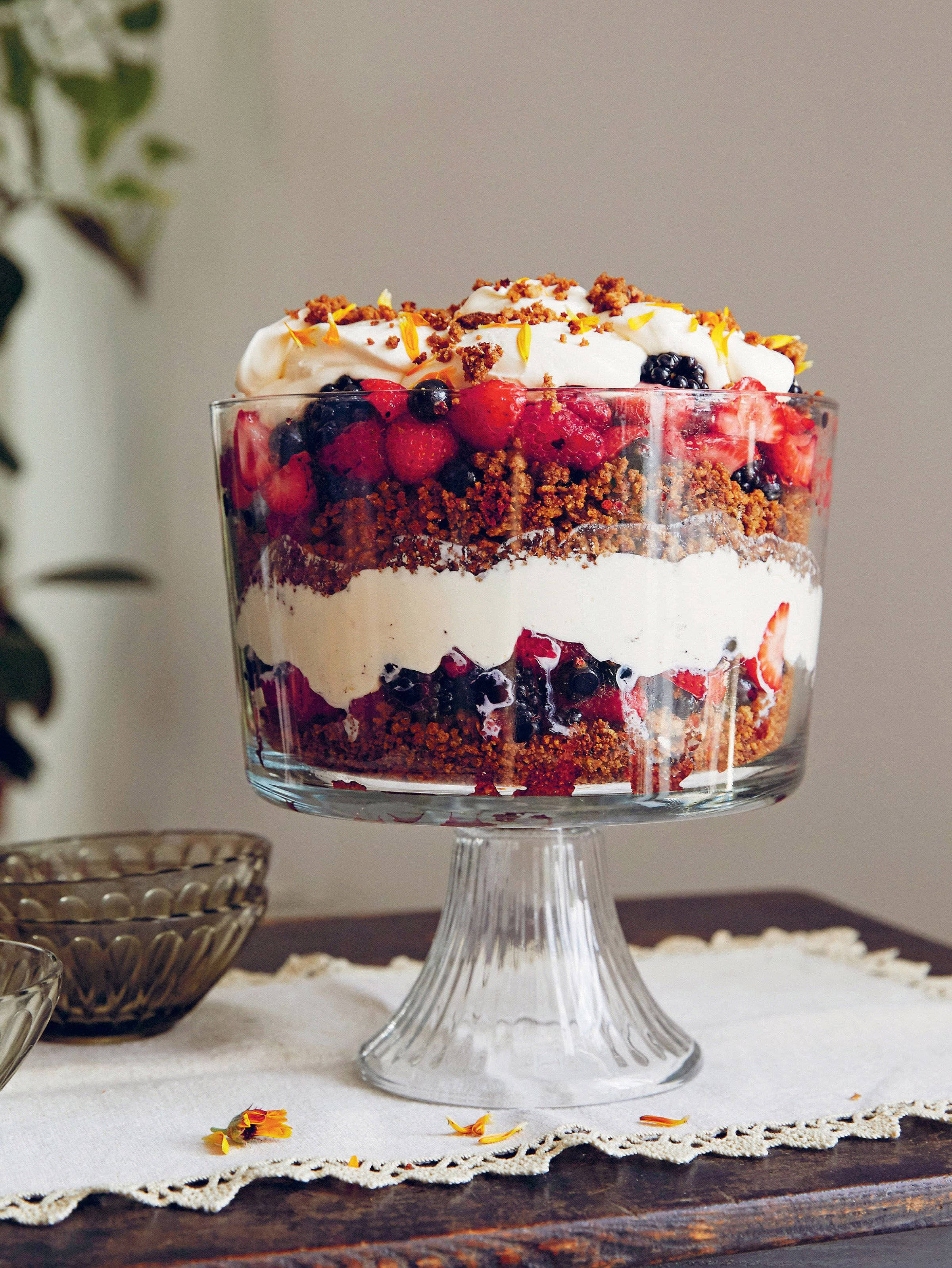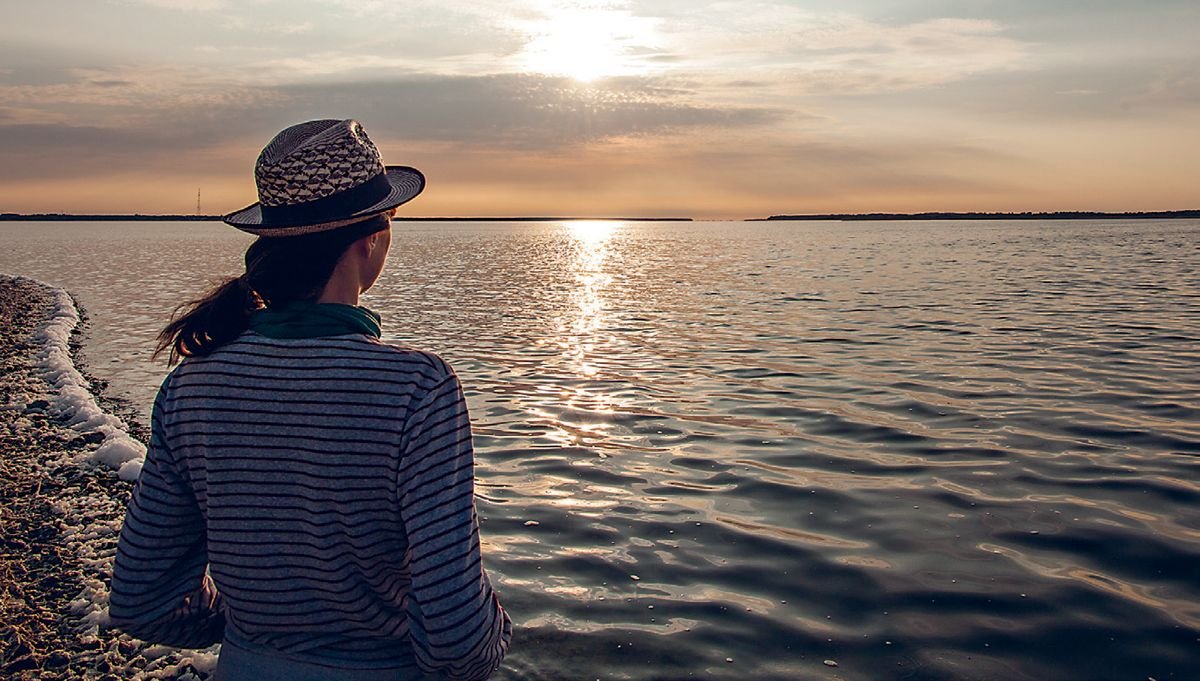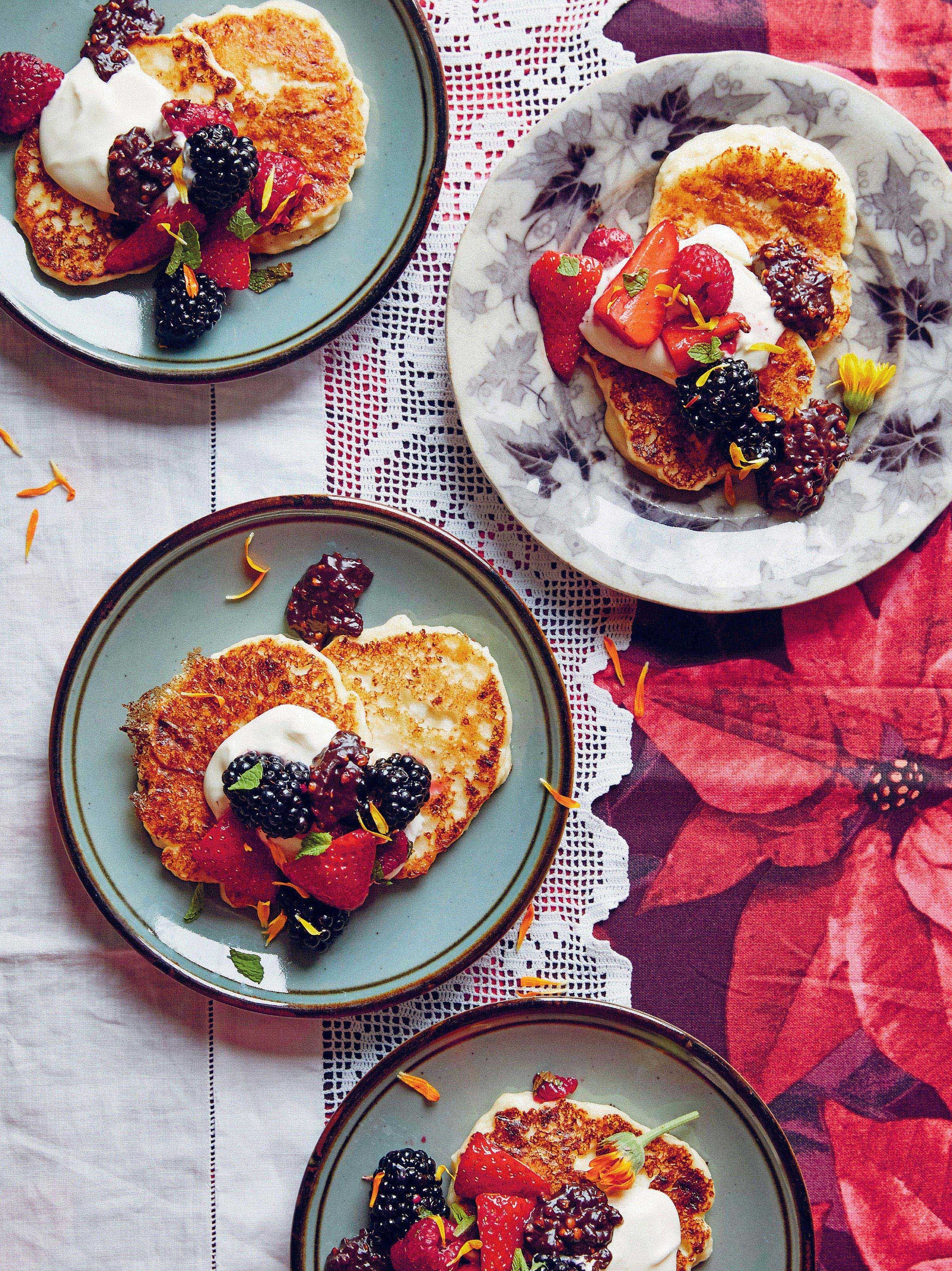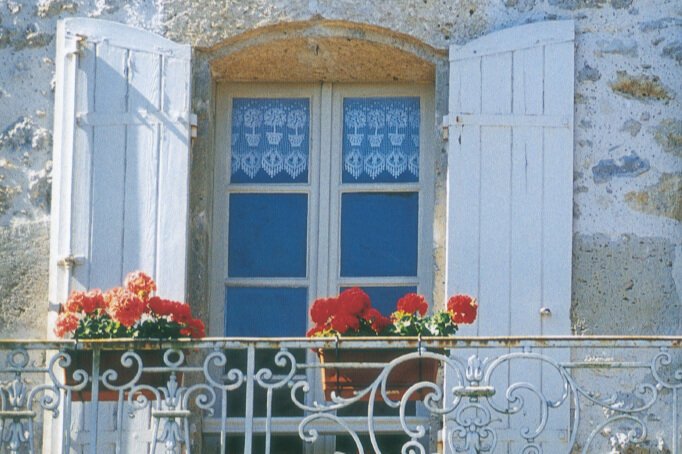Advertisement
Behind The Cookbook – Amber & Rye: A Baltic Food Journey
15 March 2022 · Behind the Cookbook
“My grandma came from Lithuania, and I felt a profound link to
that part of the world.”
Zuza Zak was born in Communist Poland in 1979, grew up in Warsaw, and has been living in the UK since she was 8. She describes herself as a “storyteller cook,” and she has a rare ability to weave together history, culture, politics, and personal stories, and to write about a cuisine in all its wonderful complexity. Zak is currently undertaking research for a food-focused PhD at the University College London’s School of Slavonic and East European Studies.
Amber & Rye is Zuza’s second book. Her first, Polska: New Polish Cooking, presented a version of Polish food – contemporary, creative – that was miles away from the ‘dumplings and cabbage’ preconception that many people held about her home nation’s cuisine.
In Amber & Rye, Zak shifts her focus to the Baltic states, inspired by the stories told to her by her Lithuanian Grandma Halinka, her idyllic childhood spent in and around Vilnius, and whose antique mahogany wardrobe, filled with “shiny brooches, leather gloves, multicolored scarves, and golden-hued amber necklaces,” was like a secret doorway to another world.
Zuza began her research journey for this book with her “grandmother’s stories ringing in her ears.”
By Zuza Zak
It seems so natural that I should have written Amber & Rye; it’s as if it was always meant to be. Yet it took quite a few years (and numerous proposals) after I wrote my first cookbook, Polska, to figure out what book I should write next.
I always knew the general area I wanted to explore, but many ideas fell flat when presented to publishers. It was all still very niche. Yet I knew it would all fall into place eventually, and it did.
My grandma came from Lithuania, and talked about it a lot during my childhood, so I felt a profound link to that part of the world without actually having gone there. Since Lithuania is linked to Latvia and Estonia, it made sense to look at the Baltic states as a whole. The ‘amber’ connection only came later. The ancient network known as the Amber Trail, along which this valuable resin was traded, connected the Baltics to the rest of Europe. I had the Amber Trail on my list of book ideas, but I only decided to combine the two themes once I got started.
In the meantime, I found out that someone else had published a cookbook on Baltic food already. That came as quite a shock, but, in the end, I think it turned out beautifully because it gave my book an extra dimension, and tied everything together: my grandma, her wardrobe, the history of the Baltic states, their importance within Europe (and beyond) and the food stories.
Rye is a staple crop in the Baltics and being able to grow this hardy cereal helped the population survive the region’s harsh winters. While it’s also popular in Poland, I believe the Baltics really celebrate rye in their cooking! For example, we have the traditional Latvian Rye Bread Trifle or the Estonian Rye Bread and Chocolate Mousse (which is based on the traditional ‘bread soup’).
On-the-ground research
I remember my time traveling in the Baltic states with great fondness. I was with my partner and my daughter and that was the last long trip we were able to take before the pandemic. It wasn’t the most relaxing of trips as we were spending on average three days in one place before moving on to the next. I was researching, speaking to people, noting recipes, while my partner was doing the travel photography.
My daughter was just 3 at the time, so it was intense, exciting, overwhelming at times. When I think of that trip, I still see the golden light reflecting off the sand dunes and the Baltic Sea, the never-ending sunsets accompanying us on walks in pretty, historic towns and cities of the Baltics, the unspoiled pine forests stretching out along the coast…
My two published cookbooks both focus on the cuisines of Eastern Europe (as does my third, coming out this summer). This is important to me, because there are only a handful of us writing about this area and the cuisine is under-represented in my eyes (just look at all the books on Middle Eastern cuisines to see what I mean).
Eastern Europe is huge and there is a great deal of variation among cuisines that all have certain things in common – certain techniques (such as fermentation), habits (such as foraging) and ingredients (grains, curd cheese, dill…) that we all share, and which unite us.
Then, of course, we also have the history of Communism, which meant that the food traditions stayed inside our homes rather than being visible to outsiders. Perhaps this is the reason that the cuisines of Eastern Europe have had such a bad reputation, and why the West is only really discovering Eastern European food now.
Evolving attitudes
Attitudes have changed considerably since I published Polska. While I was politely asked to focus less on certain foods in my first cookbook, I was positively encouraged to delve deeper into them when writing my second. I see this as a reflection of readers becoming more open to Eastern European food and more interested in trying new things. Even Soviet-style food is having a bit of a revival.
Amber & Rye focuses on modern Baltic cuisine. The recipes are therefore most often modern takes on traditional recipes, inspired by both home-cooking and restaurant cuisine. This is the food that the Baltics are enjoying now. Some recipes are shared throughout the Baltics, while others are more local to each country.
There’s a food renaissance going on in the Baltic States, so Amber & Rye celebrates that fresh, new energy. My version of Syrniki Pancakes, made with curd cheese and eaten in many guises all over the Baltic states, are served with popped chocolate buckwheat; the traditional Estonian bread soup has become a Rye Bread and Chocolate Mousse (it always was more of a mousse anyway); and traditional Latvian hemp butter has been turned into Hemp Butter & White Chocolate Cookies. However, we still have the original recipes in there too, to show where it all began.
The book starts with the very simple, ancient recipe for hemp butter. I also have included two recipes for Estonian kama, which is a mixture of grains (wheat, rye, barley, peas) that is milled to a flour, and I show various ways of using it. I believe that it’s important to have that balance – to show where we are now, the creativity and innovation, but equally to show where the food came from and how it developed.
That’s how we get a full picture of Baltic cuisine.
Try some of the most popular recipes from Amber & Rye: A Baltic Food Journey
Sign up for ckbk's weekly email newsletter
Related posts
Behind the Cookbook
Virsa: keeping family traditions alive and helping the local community.
Behind the Cookbook
The story behind the creation of My Big Fat Greek Cookbook.
Advertisement

